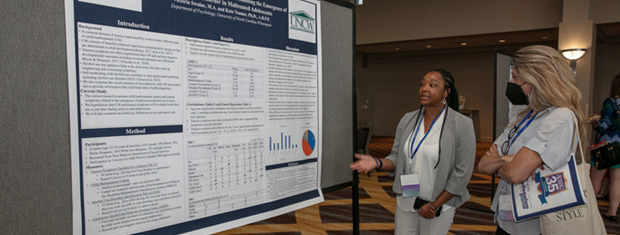




The APSAC Advisor is a peer reviewed quarterly news journal for professionals in the field of child abuse and neglect.
The APSAC Advisor provides succinct, data-based, practice-oriented articles that keep interdisciplinary professionals
informed of the latest developments in policy and practice the field of child maltreatment. It is designed to highlight
best practices in the field and publish original articles and current information about child maltreatment for professionals
from a variety of backgrounds including medicine, law, law enforcement, social work, child protective services, psychology,
public health and prevention in the U.S.
 If you wish to learn more about submitting an article to the Advisor, please click here.
If you wish to learn more about submitting an article to the Advisor, please click here.
This library contains Advisor issues dating back to the first issue in 1988. The most recent issue appears at the top.
Scroll down to select past issues by year and issue number. Once a publication appears in the box, you
can use the Enlarge button to open the document in a new window or tab (depending on how your browser is set up).
This will allow you to view the document with larger print.
To print a document, first use the Enlarge button to open the document in a new window or tab. Then use your browser's Print command.
To return here from a new tab, close the tab. To return from a new window, click your browser's Back button.
In the listing below, click on a year and issue number to see the articles in that publication.
2010 Number 4
Shaken Baby Syndrome as Portrayed in Pathology Textbooks
The controversies regarding shaken baby syndrome (SBS) continue to be widely aired and debated in the popular press, reflecting the often intense disagreement within the medical community itself, particularly between forensic pathologists and pediatricians.
Child Death Review: The State of the States in 2010
In 1994, when the first APSAC Advisor special issue on child fatalities was published, the process of child death review (CDR) was a fledgling movement in most parts of the United States. Sixteen years later, CDR is a well-established, institutionalized process in all but a few states.
Using Citizen Review Panels to Assess Child Maltreatment Fatalities
Additional opportunities for improvement and prevention within the child welfare system itself are also available. All concerned may take steps to improve outcomes in child protective services and foster care agencies. New strategies include using a children’s ombudsman (Bearup & Palusci, 1999), a state child advocate (Faith VosWinkle, Connecticut Child Advocate, personal communication, 2009), and the establishment of federally-mandated citizen review panels (CRPs).
Fatality Board Review of Near Deaths Due to Inflicted Trauma
Multidisciplinary child fatality reviews began in 1978 in Los Angeles County (Durfee, Gellert, & Tilton-Durfee, 1992) and have proved to be an important development in efforts to minimize or eliminate untoward deaths of infants and children. Much of the success of child fatality reviews has resulted from enhancing the ability of multiple agencies to share their expertise (Tilton-Durfee, 2007). In the years since the late ‘70s, a variety of teams have been established, some locally and others on a statewide basis. While some of these groups review all child deaths, others review only fatalities from child maltreatment.
In 2009, over 64,700 reports of child abuse and neglect involving more than 90,000 children were made in New York City (NYC Administration for Children’s Services, 2010). As first responders to these difficult and demanding cases, Child Protective Service (CPS) workers often deal with traumatic events related to their casework, such as child fatalities, severe child physical and sexual abuse, and violence directed toward them while in the field.
An Interview With Dr. Michael Durfee
In 1977, Michael Durfee was working as a child psychiatrist in the Los Angeles County foster care program when he initiated the first child death review. The project started small; he recruited a public health nurse to help him go through coroner’s reports. Reviewing the cases, he says, was a way for him to cope with the fear of a child dying under his care, and an attempt to hold accountable those persons charged with protecting children.
The purpose of Journal Highlights is to alert readers to current literature on child abuse. Selected articles from journals representing the variety of disciplines reflected in APSAC's membership are presented in the form of an annotated bibliography.
APSAC’s Position on Forensic Interviewer Certification
The APSAC Board has been gathering information on the question of professional certification of forensic interviewers. Throughout this process, the Board has sought insights from professionals across the country. In an effort to gather this information, we asked, Should APSAC support certification of forensic interviewers? The question assumed and was clearly framed in such a way that any certification program considered would be based on research and evidence-based practice. This resulted in a rich conversation among professionals both supporting and not supporting certification of forensic interviewers. The input has been extremely helpful.
APSAC Advisor 21(4): Full Issue